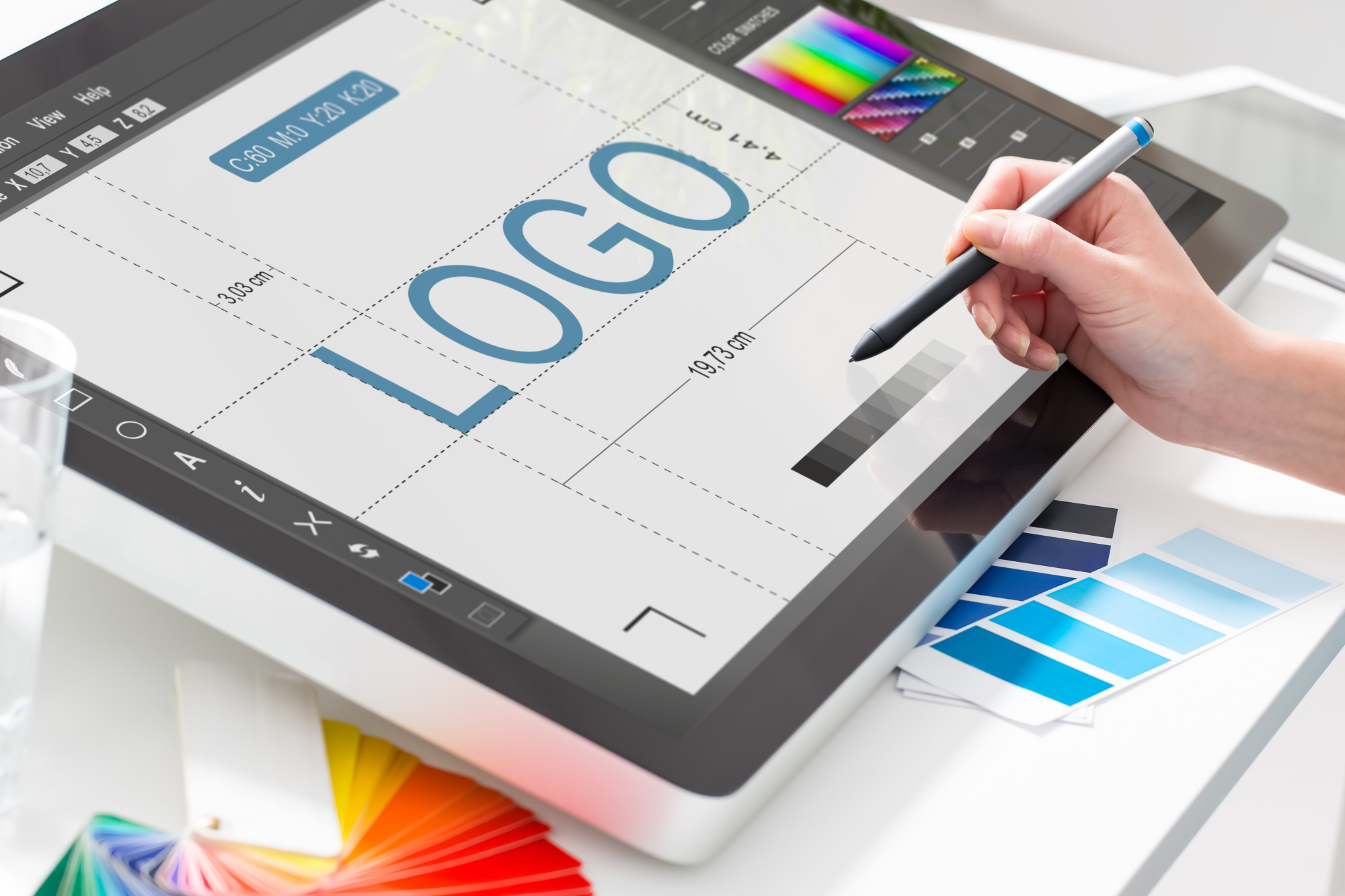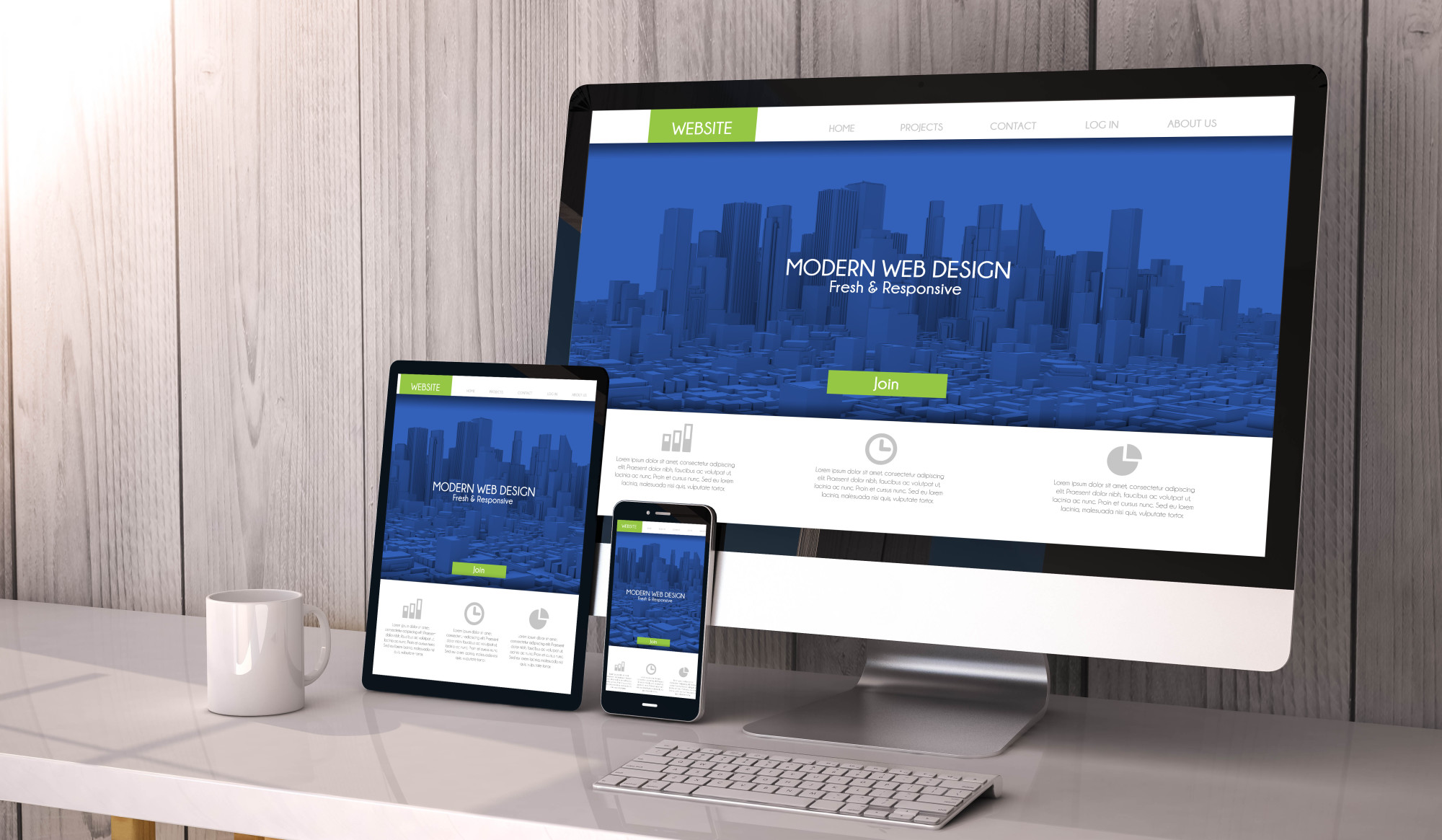3 Creative Framing Ideas You Will Not Find Anywhere Else
Posted on July 12, 2021 by Logo Design Tips and Tricks

Are you looking for some creating framing ideas that can put a fresh spin on how you display art or photographs in your home? The art in your home gives your space some character and getting creative with your framing can take this detail to the next level.
For some creative cheap framing ideas that can light up your home, keep reading. These DIY framing ideas are great for any home.
1. Enlarge the Frame
If you want to take a picture or piece of art pop, a great way to do so is by framing it with a large and decorative piece. If you can’t find a frame with a wide enough border, you can make one yourself by using two framed and attaching them together with glue. You can nest one smaller frame inside a larger one for a thicker, chunkier look.
This can make the piece you are displaying pop and you get the look of a nicer, more expensive frame without having to spend tons of money. Find two frames that have the same finish and style for a classy and elevated look. You can find custom mats to fit your new and improved frames.
2. Fake a Floating Frame
If you need to give your wall art a boost or are hoping to put a piece on a large wall but it feels too small for the space, a great way to give the illusion of a bigger piece is to create a floating frame design. This is a great and affordable alternative to custom framing. Take your piece of framed art and find a frame that is much larger to put around it for a floating appearance.
Find a second frame that is much bigger than the current one, leaving around four to five inches of space between the two frames. This allows for a border that is much larger, taking up more wall space while also attracting more attention.
You can choose the same finish for both frames if you’re looking for a cohesive look or you can mismatch frames for a more eccentric feel. For example, pairing a lacquer and a metallic frame together can be a great way to give your home a modern and artsy appearance.
3. Add Hardware to Your Frame
A great way to add some detail to an ordinary frame is to add some hardware. You can take an inexpensive frame and make it look more upscale by adding metallic pieces, such as metal brackets from your local hardware store. Adding these pieces to each corner of the frame can give an average wooden frame a more industrial appearance.
Creative Framing Ideas to Try at Home
If you want to take your wall art to the next level without breaking the bank, try some of these creative framing ideas in your home. These ideas can add some character to your walls while presenting some of your favorite pieces.
For more advice, tips, and tricks, head to the blog section of our site.
Logo Imprinting: 5 Tips to Make Your Logo Stand Out
Posted on April 29, 2021 by Logo Design Tips and Tricks

Logos are an important part of a business. They’re the visual part of a company’s brand. They’re the symbols that represent what your company is about that people can relate to instantly.
You’re already familiar with the billion-dollar logos of Nike, IBM, Apple, Google, and Facebook. Did you know that Nike only spent $35 back in the 1970s to have the iconic swoosh created?
Today, the swoosh is one of the most recognizable logos in the world. There are ways you can use logo imprinting and other tips to replicate that success.
If you’re a small business owner, you know that you don’t have the big budget to create a billion-dollar logo. You don’t need to.
You just need to keep reading to learn the top tips to make your logo stand out from the crowd.
1. Know Your Audience
How well do you know your target market? This is one question that you can ask yourself before you begin to think about logos.
That’s because your logo is the connection between perception and your business. If you don’t know what your customers want or need, they won’t have a way to relate to your business.
Your logo and your brand won’t be worth much.
You need to make sure that your business offers the right products or services that your customers need. You also have to know what your customers need as you provide those products or services.
Look at the car industry. They all sell the same thing – a vehicle that gets you from Point A to Point B. Yet, when you look under the surface, each brand offers something a little unique.
Volvo offers safety. Lexus offers luxury. Porsche offers high-performance. Toyota has reliable and sustainable vehicles.
To figure out what your market needs, do some research. Look to see what your competition offers and how you can make your company unique. Then survey your target market and see if there’s a fit.
2. Keep the Logo Design Simple
It’s very tempting to create a logo that has everything, including the kitchen sink. You need to exercise restraint and limit what you put in your logo.
A complex logo is hard to use, especially if you plan to put your logo on promotional products.
How can you keep your logo simple? Only have two typefaces in your logo at the most. Logos that have three or more fonts look sloppy and no one knows what you’re trying to communicate.
Another way to keep your logo simple is to use one or two colors. More colors can be hard to separate on printed products and they can bleed into one another.
3. Put Your Logo on Social Media
In an ideal world, you’ll have several versions of your logo. You’ll have a version with an icon and your company name and another version with just the icon. You should also have a full-color and white version of each.
Examples of companies that do this range from Facebook to McDonald’s. That’s because there are different applications for your logo.
You can use the icon as a watermark in social media posts to reinforce your brand as your content adds value to readers.
The full logo can be used in lower-thirds where you introduce the name of the person speaking and your business.
4. Choose the Right Promotional Products and Apparel
If you want your logo to be seen, you need to turn to logo imprinting and put your logo on promotional products and apparel.
You can’t just put your logo on any old product. You need to be strategic about the products that you choose.
Go back to your target market. Think about what products they would find to be useful. For example, if your business is a gym, logos on products such as water bottles and hand towels are useful.
The next step is to find a printer that offers those products and quality printing. There are a lot of quality companies like Team Concepts Printing, Vistaprint, and MOO.
5. Deliver On the Brand Promise
Logos and brands are so valuable because they’re based on perception. Remember that your brand is the promise that you give to your customers.
Your brand is the one thing that you want your business to be known for. It can be for excellent customer service, safety, happiness, or cool. The brand is often a feeling that customers have when they work with your company.
Amazon’s brand is that it offers everything you need, delivered conveniently, at a low price. The company started with books over 20 years ago and grew to become one of the most well-known and reliable brands in the world.
What is your brand known for? Is it what you want your business to be known for? What would you like your brand to be known for 10 years from now? How can you start to deliver on that promise today?
These are some of the questions that you need to ask yourself in order to create a total brand experience for your customers. That will help you deliver on your promise to them.
Logo Imprinting and More Branding Tips for Small Businesses
Your logo is one of the best business assets you have. It’s how people relate to your business and how they perceive your business.
To make your logo stand out, you need to know your audience and understand their needs. You can create a logo that tells a story about your business and use logo imprinting to put it on promotional products.
Are you ready for more tips to market your business? Check out the other marketing articles on this site.
8 Things You Need To Consider When Designing a Logo
Posted on January 24, 2021 by Logo Design Tips and Tricks

Your logo is one of the most important aspects of your business. It can set the tone for your style and be the one feature that customers remember. That’s why it’s so essential to get the logo right.
But what makes a good logo? There isn’t just one element that makes a logo a winner. All good logos have multiple amazing elements that come together to create something memorable.
Then if there are so many contributors to a good logo, how do you create one? Here are eight tips to consider when designing a logo.
1. Consider Your Audience
Before you start your business or brand, you have to know who your target audience is. This will help you make all of the future decisions that will help grow your business or brand. But you also need to take your target audience into account with your logo.
That’s because your logo helps to create your brand identity. Your logo can help establish the service or product you offer and who that service or product is for.
Your brand logo will look different if you’re target audience is children than if your target audience is young adults. Your audience can determine all the other factors within your logo.
2. Trendy vs. Unique
Your logo should keep up with the trends so that it feels current and refreshing. But there is a fine line between following the trends and being too trendy. You don’t want your logo design to stand out in the wrong way.
But you do want your design to stand out in a unique way. To get ahead of competitors, you should get creative with your logo design. No matter what style you choose, your logo should relate to your product or services.
Choose images and elements that relate to your brand. Hardware tools don’t make much sense on a logo for a retreat and spa.
3. Lean Into Typography
Typography can make or break your design. The font within your logo is just as important as any other design element. Your typography should complement the other elements, be easy to read, and make sense for your brand.
If you have a lot of delicate strokes and thin lines, then a font with bold, heavy strokes may look out of place. Consider your product or service when choosing the typography as well. A hardware store will need a different font than a tech company.
Above all, your typography should be easy for your customers to read. If no one knows what your logo says, then how are they supposed to find your business?
4. Conversion is Everything
On the technical side, your logo should be able to convert to different file formats. JPG, GIF, PNG, WMP, and TIFF are only a few options you should explore. They allow for your logo to render as a single element rather than separate elements.
This allows you to scale your logo up or down and be used on the web and printing a logo. Whether you design or your own logo or have it professionally designed, you want to have as many file formats as possible.
This will allow you to effectively use your logo on various mediums while maintaining the design’s clarity.
5. The Logo Has to Look Good
It comes as no surprise that a logo has to look good. If a consumer is faced with a decision, more often than not, they will choose a business or brand with a better design. But your logo also has to look good on everything.
You won’t use your logo in just one format because you’ll want to use it for various purposes. The logo has to look just as good small on a business card as it does large, on a banner, and everything in between.
Consider also the material of promotional items. From cotton t-shirts to ceramic mugs to paper business cards, you want your logo to look good on all mediums. Allow your logo to be flexible enough to work on any medium at any size.
6. Don’t Over Complicate
When it comes to a logo, simplicity is better than complicated. It may seem tempting to add in a lot of elements to get your point across. But with a logo, less is always more.
Think of some of the most well-recognized logos. They utilize a few colors, have a memorable, or may even be only one image. A simple design looks best when sticker printing, letterheads, or on social media.
Avoid overcrowding your design and pare down your logo to the essential elements. A simple image or striking font can be more memorable and pleasing to the eye.
7. Think About Color
Color can be one of the most useful tools in your logo design. There are so many brands, large and small, that can be recognized by color alone. Your logo color can determine the entire feeling of your brand.
Choose shades that complement each other by using a color wheel. You should also look into the meaning behind color to help you make your decision. As important as color is, you also consider how your logo looks in black and white.
8. Do Your Research
This is one of the most vital steps you can take when considering a logo design. Do some research on your target audience as well as competitor brands and businesses.
Find out what kind of logos customers best respond to and utilize those elements in your own branding. You can also see the logos that your competitors are using to stay ahead of the trend.
Designing A Logo That’s Memorable
Have you ever scrolled through social media or browsed the internet and stumbled upon a business that had a great memorable logo? Doesn’t it make the brand and business feel more cohesive and trustworthy?
If you had a choice between two businesses, with one having a stunning logo and the other only having plain text, which are you more likely to purchase from? That’s the power of designing a logo that returning and potential customers can’t forget.
But there’s much more to creating the perfect logo than meets the eye. These eight tips are great to consider before you start designing a logo for your business or brand.
Did you find this article helpful? Share it with a friend and check out more marketing and advertising advice.
How to Create a Business Website: 8 Tips for Good Web Design
Posted on January 20, 2021 by Logo Design Tips and Tricks

Did you know: in 2020, 28% of online searches for local businesses led to a sale? With the internet playing such an unprecedented role in our lives, businesses simply cannot do without an effective website.
But, you might be wondering how to create a business website? Or what are the different elements your website needs to incorporate?
Keep reading for our guide to having a great website design for your business.
1. Get Interactive
The first of our web design tips is to include interactive elements on your website. These are useful for many reasons. First, they encourage the user to stay on your page for longer.
By including fun elements like a quiz, you create a stronger connection with your potential customer, and they are likely to increase their interest in making a purchase.
Next, interactive elements can also help with lead generation. By including options to sign up for a newsletter or filling in contact details to make an appointment, visitors to your website are providing you with their personal details which you can then target with your marketing strategy.
2. Consider Your Business Objectives
Next, when you’re considering how to make a business website, this process needs to be driven by your business objectives. Take a look at your Key Performance Indicators (KPIs) and explore how a website can help you meet these targets.
For example, younger businesses might be placing a greater focus on building brand awareness and brand recall. They will want to include regular blog content and focus on establishing consistent branding.
Meanwhile, a business with sales-driven objectives will want to ensure that the user journey from the website landing page to checkout is as simple as possible.
3. Don’t Forget Branding
One of our most important small business website tips is to focus on your branding. This includes the color scheme, font, images, logo, and tone of voice used in the website content.
Each of your webpages should be consistent in your branding, presenting your business in the way you wish to appear to customers. This might be as a friendly, family-run business, or as a professional consultant with vast experience.
You also need to include prominent links to your social media pages. This includes Facebook, Twitter, LinkedIn, TikTok, and YouTube, if possible.
The branding across your digital presence and in email marketing should be consistent too. Remember to direct customers to your website in your social media posts and bios, as well as in your email campaigns.
4. Include a Blog
For those small-business owners wondering how to drive traffic to your website, a great way to improve your SEO is by including a blog section in your website. Try to publish articles that address common questions that might arise in relation to your products or services.
This way, someone might enter their question into a search engine, then come across your blog that provides the answer. It is likely that they will then remain on your website and explore whether you can meet their needs.
Make sure your blog is easy to find, and include a search function so that visitors can find exactly what they are looking for.
5. Make Navigation Simple
One of the worst mistakes a business can make is to set up a website with all the essential pages and features, but make it difficult for visitors to navigate. Avoid confusing layouts, and try to anticipate what the most popular pages of your website will be.
These can go at the top of drop-down lists, or in the center of your website to make them easy to find. Don’t forget that you can use analytics dashboards to find out exactly which of your website’s pages gets the most hits.
6. Review and Test
An essential element of web design is to continually review how your website is performing and to test different options to find out what works best. Many website managers and analytics programs offer the possibility of A/B testing. This allows you to compare like-for-like options, such as different images or landing pages, to see which performs better.
You also need to look into digital experience analytics to make sure your website is as effective as possible. This includes heat mapping, session replays, and other tools that let you optimize the user experience.
7. Set Goals
A component of web design that goes hand in hand with reviewing your website’s performance is setting goals. You should set reasonable objectives for metrics you want your website to achieve.
This will help you determine whether you are increasing traffic and sales thanks to your website.
Some of the key numbers to look at are the number of site visits, the time spent on your site, the conversion rate for your visitors, and interactions per visit.
8. Don’t Forget Contact Details
If one of the purposes of a business website is to create leads, a common error business owners make is to make it difficult for potential customers to contact them. One of the ways around this is a footer across your website with your business’s information.
This should include your business address (if applicable), as well as a phone number and email address that are monitored regularly.
You could also consider an FAQ page that might divert users away from your support team, and allow them to help themselves.
That’s How to Create a Business Website
Now that we’ve provided our top web design tips and tricks, it’s time to set up a website that will attract potential customers and help move them down the sales funnel until they become loyal, returning customers. Don’t forget that web design is a process of continual improvement and that the job is never truly ‘done’.
If you found this article about how to create a business website useful, be sure to check out our other business-related posts!








